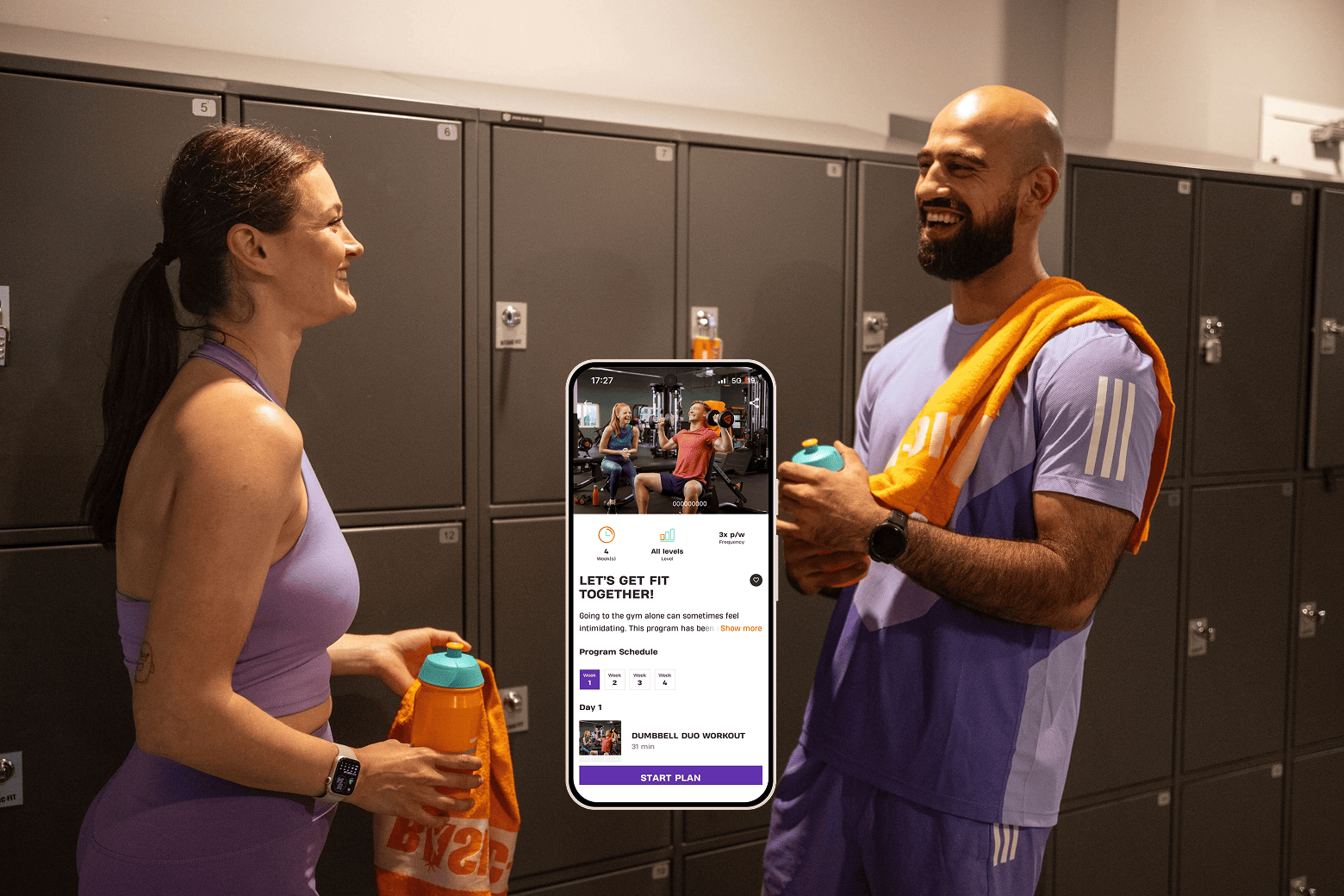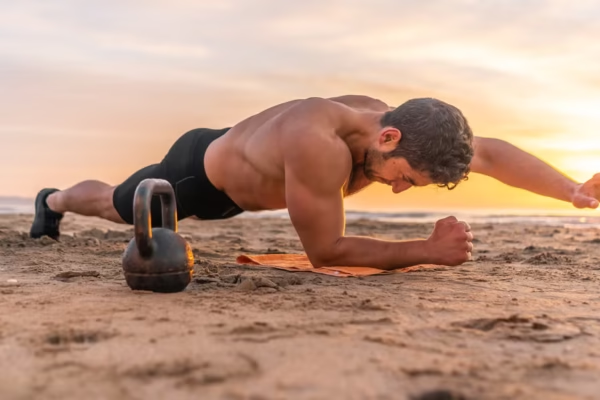Working out with a gym partner transforms exercise from a solo grind into a fun, motivating experience. A buddy brings accountability, encouragement, and a touch of friendly competition that can push you to new heights. Whether you’re high-fiving after a tough set or laughing through a clumsy rep, partner workouts build not just muscle but also connection. This article dives into seven buddy workout exercises, designed to maximize fun and fitness while keeping you and your gym partner moving together.
Why Partner Workouts Are a Game-Changer
Partner workouts aren’t just about sweating together—they’re about building trust, staying consistent, and making fitness enjoyable. Research shows exercising with a partner can boost gym attendance by 35%, as you’re less likely to skip when someone’s waiting for you. Plus, you’ll push harder, laugh more, and maybe even discover muscles you didn’t know you had. These exercises are crafted for all fitness levels, requiring minimal equipment and maximum teamwork.
The Power of Accountability
Having a gym buddy means you’re less likely to hit the snooze button. Your partner’s energy can spark your own, turning “I’ll skip today” into “Let’s crush this!” Accountability fosters consistency, which is key to long-term fitness gains.
Fun and Motivation Boost
Partner workouts inject playfulness into your routine. Whether it’s a competitive squat battle or a synchronized plank high-five, the shared experience makes every rep feel lighter. You’ll leave the gym smiling, not just sore.
Improved Form and Safety
A partner can spot your form, catch a wobble, or suggest tweaks to keep you safe. They’re your second set of eyes, ensuring you’re squatting low enough or keeping your back straight during a push-up. This feedback reduces injury risk and maximizes results.
Getting Started: Tips for a Successful Partner Workout
Before diving into the exercises, set the stage for success. Communicate your goals and limitations with your partner—maybe you’re rehabbing a knee injury, or they’re aiming for a strength PR. Warm up together with dynamic stretches like arm circles or high knees to sync your energy. Most importantly, keep it light and fun; a gym buddy is your cheerleader, not a drill sergeant.
Warm-Up Together
Spend 5–10 minutes on a shared warm-up. Try jumping jacks in sync or mirror stretches where one leads and the other follows. This primes your muscles and builds camaraderie before the real work begins.
Choose the Right Partner
Pick someone with similar fitness goals and a compatible vibe. A partner who shares your drive—whether it’s weight loss or muscle gain—keeps you both on track. Bonus points if they make you laugh.
Equipment You’ll Need
Most of these exercises use bodyweight, but a medicine ball, dumbbell, or resistance band can add variety. If you’re at home, a water bottle or backpack can double as a weight. Check your local gym or online retailers like Amazon for affordable gear.
The 7 Best Buddy Workout Exercises
Here are seven exercises to try with your gym partner, each designed to hit major muscle groups while fostering teamwork. From core-blasting planks to leg-burning squats, these moves are beginner-friendly yet scalable for advanced athletes. Let’s get moving
1. Plank Hand Taps
Target: Core, shoulders, chest
Face your partner in a high plank position, about an arm’s length apart. Simultaneously reach forward with your right hand to tap your partner’s right hand, then switch to the left. Keep your hips steady and core tight to avoid wobbling. Do 3 rounds of 10 taps per side. Tip: Drop to your knees for an easier variation.
2. Partner Squat and Ball Pass
Target: Legs, core, coordination
Stand back-to-back with your partner, holding a medicine ball or light weight. Both squat down, then twist to one side to pass the ball to your partner, who twists to receive it. Continue passing in one direction for 12–15 reps, then switch sides. Do 2 rounds. Tip: Skip the ball for a lighter version, mimicking the pass motion.
3. Push-Up and Clap
Target: Chest, arms, core
Get into a push-up position facing each other. Perform a push-up, then reach out to clap one hand with your partner’s. Alternate hands each rep, keeping your movements controlled. Aim for 3 rounds ofSpec: 3 sets of 10–12 reps. Tip: Modify by doing push-ups from your knees if needed.
4. Sit-Up with Pass
Target: Abs, coordination
Sit facing your partner with feet touching, one holding a medicine ball or light weight. Both lower into a sit-up, then pass the ball as you come up. Switch who holds the ball each rep. Complete 3 rounds of 12–15 reps. Tip: Use a light object like a water bottle if you don’t have a medicine ball.
5. Squat Jump Battle
Target: Legs, endurance
Stand side by side in a squat hold. One partner jumps once, returns to the squat, then the other jumps twice. Alternate, increasing the jump count each time, for 1–2 minutes. Tip: Replace jumps with regular squats for a low-impact option.
6. Burpee Relay
Target: Full body, cardio
Take turns doing 5 burpees while the other rests or holds a plank. Switch roles after each set. Complete 3 rounds each. Tip: Swap burpees for jumping jacks or step-back burpees to reduce intensity.
7. Medicine Ball Squat Toss
Target: Legs, core, upper body
Stand 3–4 paces apart, one holding a medicine ball. Squat, then toss the ball to your partner as you rise. They catch, squat, and toss back. Do 3 sets of 10–12 reps. Tip: Use a lighter ball or mimic the toss motion without equipment for beginners.
Comparison: Bodyweight vs. Equipment-Based Partner Workouts
| Aspect | Bodyweight Workouts | Equipment-Based Workouts |
|---|---|---|
| Accessibility | No equipment needed, ideal for home or travel | Requires gym access or specific tools (e.g., medicine ball) |
| Cost | Free, no gear required | May need to purchase or access equipment |
| Scalability | Easily modified for all fitness levels | Can increase intensity with heavier weights |
| Variety | Limited to bodyweight movements | More diverse with tools like dumbbells or bands |
Verdict: Bodyweight exercises like Plank Hand Taps and Squat Jump Battle are perfect for beginners or minimalists, while equipment-based moves like Medicine Ball Squat Toss add intensity and variety for advanced pairs. Mix both for a balanced routine.
Pros and Cons of Partner Workouts
Pros
- Motivation Boost: A partner’s energy pushes you to show up and give your all.
- Social Connection: Builds stronger friendships or romantic bonds through shared effort.
- Improved Form: Feedback from your buddy ensures safer, more effective moves.
- Fun Factor: Laughter and teamwork make workouts feel less like a chore.
Cons
- Scheduling Challenges: Coordinating workout times can be tricky.
- Pace Mismatch: Differing fitness levels may require adjustments.
- Distraction Risk: Chatting too much can derail focus—set boundaries.
Balancing these pros and cons means picking a partner with similar goals and keeping workouts structured yet fun.
People Also Ask (PAA)
What are the benefits of working out with a partner?
Partner workouts increase accountability, motivation, and enjoyment. They improve form through feedback, reduce injury risk, and foster social bonds, making fitness more sustainable. Studies show partnered exercise leads to 35% higher gym attendance.
How can I find a gym buddy?
Join group fitness classes at gyms like EōS Fitness or use apps like MyGymBuddy to connect with local workout partners. Online communities or social media groups focused on fitness are also great places to find like-minded buddies.
What are some fun partner exercises for beginners?
Beginner-friendly moves include Plank Hand Taps, Back-to-Back Wall Sits, and Partner Squats with Hand Support. These require no equipment, build core and leg strength, and encourage teamwork without overwhelming newbies.
Where can I get equipment for partner workouts?
Affordable medicine balls, resistance bands, and dumbbells are available at retailers like Amazon, Walmart, or Dick’s Sporting Goods. Check your local gym for equipment access or browse second-hand options on platforms like eBay for budget-friendly finds.
My Personal Experience with Partner Workouts
Last year, I teamed up with my best friend, Sarah, for weekly gym sessions. We were both stuck in a fitness rut, dreading our solo treadmill slogs. Our first partner workout was a disaster—picture two uncoordinated pals fumbling a medicine ball and giggling through wobbly planks. But that laughter hooked us. We started with simple moves like Plank Hand Taps, cheering each other on. By week three, we were nailing Squat Tosses and hitting PRs we’d never dreamed of alone. Sarah’s encouragement got me through tough days, and spotting her form kept us injury-free. Now, our gym dates are the highlight of my week—proof that a buddy makes fitness feel like play.
Tips to Maximize Your Partner Workout Experience
- Set Clear Goals: Discuss what you both want—strength, endurance, or just fun—and tailor exercises accordingly.
- Keep It Balanced: Alternate who leads or chooses exercises to ensure both feel involved.
- Celebrate Wins: High-five after tough sets or track progress together to stay motivated.
- Mix It Up: Combine bodyweight and equipment-based moves to keep workouts fresh. Check out the Basic-Fit app for more partner workout ideas.
FAQ: Common Questions About Buddy Workouts
How do partner workouts improve motivation?
A gym buddy holds you accountable, making you less likely to skip sessions. Their encouragement and friendly competition push you to work harder, while shared goals make the journey fun.
Are partner workouts safe for beginners?
Yes, exercises like Plank Hand Taps or Partner Squats are beginner-friendly and low-risk. Start with bodyweight moves, focus on form, and communicate any physical limitations to your partner.
What if my partner and I have different fitness levels?
Choose scalable exercises like Sit-Up with Pass, where intensity can be adjusted. The stronger partner can use heavier weights or add reps, ensuring both are challenged without frustration.
Can I do partner workouts at home?
Absolutely! Bodyweight exercises like Squat Jump Battle or Plank Hand Taps need only a mat and space. For equipment-based moves, grab a medicine ball or resistance band from online stores like Amazon.
How often should we do partner workouts?
Aim for 2–3 sessions per week, balancing partner workouts with solo or group classes. A 30-day challenge, like the one outlined by Fitness Project, can build consistency.
Where to Find More Partner Workout Resources
- Gym Apps: Download apps like the Basic-Fit or Planet Fitness app for guided partner workout plans and exercise demos.
- Group Classes: Join classes at gyms like EōS Fitness for instant workout buddies and structured routines.
- Online Communities: Platforms like MyGymBuddy connect you with local fitness partners.
- Equipment Retailers: Stock up on tools like medicine balls or bands at Amazon or Dick’s Sporting Goods for home workouts.
Final Thoughts: Why You Should Grab a Gym Buddy
Partner workouts turn fitness into a shared adventure. These seven exercises—Plank Hand Taps, Partner Squat and Ball Pass, Push-Up and Clap, Sit-Up with Pass, Squat Jump Battle, Burpee Relay, and Medicine Ball Squat Toss—blend strength, cardio, and fun. They’re accessible, scalable, and perfect for building both muscle and memories. So, text your gym buddy, set a date, and start sweating together. You’ll wonder why you ever worked out alone.






